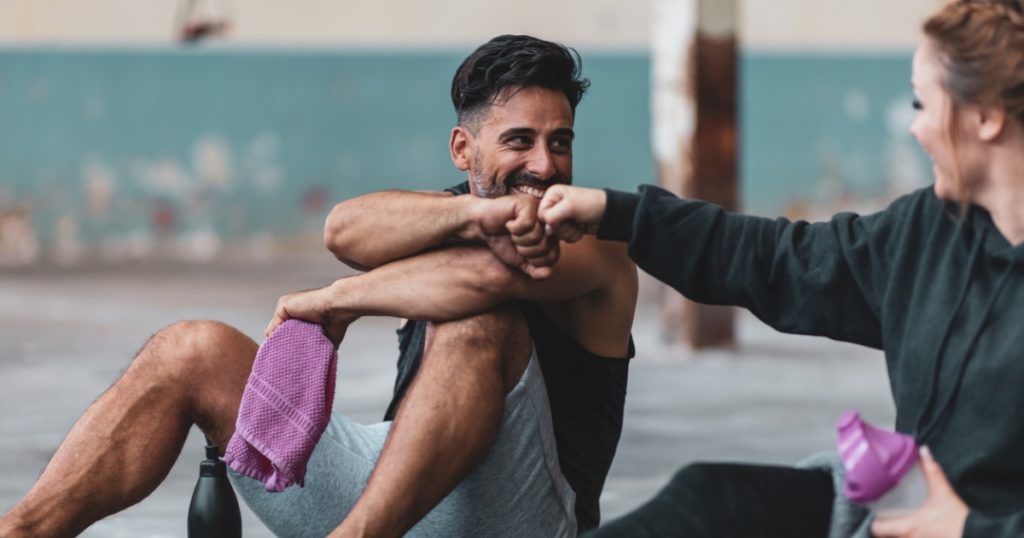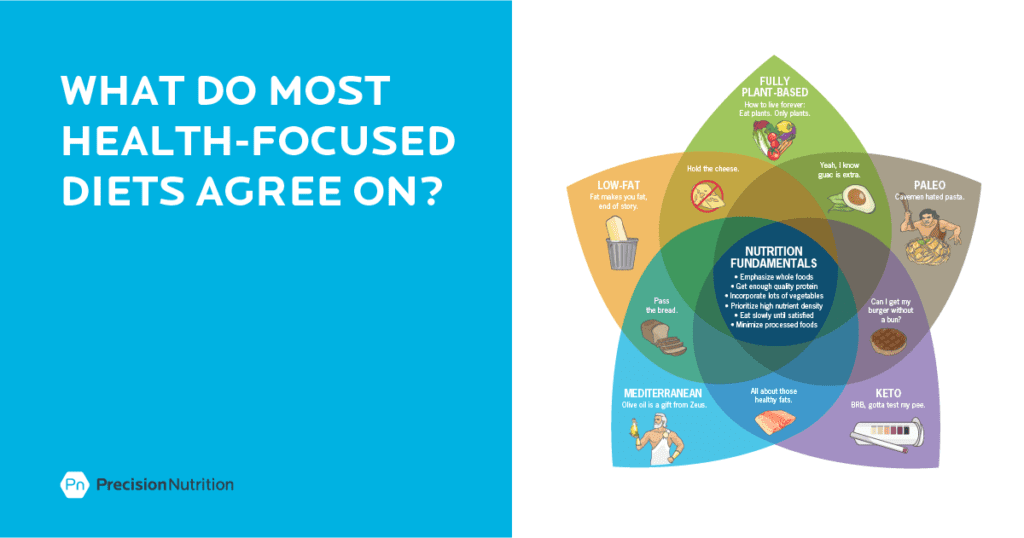“If I can do it, you can do it.”
You’ve heard that fitness advice. Maybe you’ve even said the words yourself.
(Sheepishly raises hand.)
And it’s time for this cliché to end.
Especially when it comes to fitness, nutrition, and health.
Because most of the time:
It’s not true.
Just because you can do something doesn’t mean someone else can do it.
More importantly, this phrase backfires, making people feel worse than before.
Here’s why, and the fitness advice you might want to offer instead.
++++
When we use this fitness advice, we usually have the best of intentions.
Maybe we’re trying to relate to a client: “Hey, I’ve been there!”
Or perhaps we’ve felt inspired by any number of news stories. Think: Blind man climbs Everest.
But there’s a problem.
No two people are exactly the same.
We might, as coaches, think we’re comparing apples (our life) to apples (our client’s life). But more likely, our client knows they’re an orange… and feels misunderstood and alienated—usually for one (or all) of the following reasons.
#1: Someone’s background impacts their health.
Things like where we’re born, how we grew up, and what we do for work shape how we eat, move, and live. They also affect our ability to change for the better.
Technically, these factors are called social determinants of health. And they can influence us positively or negatively.
Examples of social determinants include:
- Income
- Education
- Job stability
- Work conditions
- Food access and security
- Housing and environment
- Early childhood development
- Social community
- Neighborhood environment
- Access to affordable and high-quality health care
Social determinants can be more important than lifestyle choices in influencing health, according to the World Health Organization.
Here’s how this can play out with clients.
You tell someone to hit the gym. If you can muster the effort to get to the gym on a busy schedule, so can your client, right?
Well no, not necessarily.
Especially if they work long hours and don’t have childcare.
Or maybe you suggest “more veggies” to a virtual client.
You don’t like veggies either, you say, but if you can find a way to eat them, your client can surely figure it out. Except, your client lives with their mother-in-law who cooks all of their main meals, which tend to include few veggies. In your client’s home, everyone thanks the cook, whether they like the food or not.
Does your client have some options? Sure—but not as many as someone who has more control over their dinner plate.
There are thousands of ways social determinants of health can make what’s possible for you (with some hard work) straight up impossible (or a whole lot harder) for someone else. Some social determinants of health are really hard to recognize—especially if you haven’t walked in that person’s shoes. So heed this universal rule of thumb: Don’t make assumptions.
#2: Every person’s body is unique.
Let’s assume you and your client have the same social circumstances.
Is it okay to say “if I can do it, you can do it?”
Spoiler alert: Nope.
Because genetics also play a role.
Say you’re a person who puts on muscle easily. For you, maintaining a lean, athletic physique means working hard in the gym and keeping a close eye on your nutrition.
Of course, those two things require effort. Maybe a lot of effort.
But a person who has a harder time building muscle, and tends to store fat around their middle thanks to their genes?
They’re not going to get the same results as you—even if they eat and exercise exactly the same way. Those are the genetic cards they’ve been dealt.
So no—they can’t “do it” just because you can.
#3: Some people are luckier than others.
Most people who’ve worked hard to get where they are don’t want to admit that the universe might have helped them out a bit.
Imagine this: You’re an athlete competing at the CrossFit Games.
The final workout—the one that decides who’ll win—happens to be deadlift-focused, something you’re specifically great at. (If it’d been snatches, it’d be a totally different situation.)
When you win the CrossFit Games after that final workout, it doesn’t mean you haven’t worked hard. But did you also benefit from the luck of the draw? Yup.
Perhaps a more relatable example: Maybe you met a coach or friend—just as you’re ready to make a change—who revolutionizes how you think about nutrition and fitness. And that sets you down the path to a healthier lifestyle.
In an alternate universe, where you didn’t meet that amazing coach at the right time, it might’ve taken you a whole longer to get where you are today.
The point: Don’t discount the “right place, right time” effect.
3 better ways to help your clients
Use all three together—or pick what works best in a given conversation.
1. Use limited relatability.
Say someone’s going through a divorce, and their coach has been through one, too. It could be tempting to offer advice like:
“I know this is a hard time for you. My divorce was brutal! But I managed to stay on top of my nutrition while going through mine, so I know you can do it.”
Ouch.
There’s a better way to use the experiences you have in common with a client, without making assumptions about their situation.
It’s called limited relatability, which helps you relate, while also allowing your client to feel heard and understand.
To master the technique, use this simple two-step formula.
| Share your experience: | “I know what [fill in the blank] looks like for me.” |
| Get curious about your client’s experience by asking an open-ended question: | What does it look like for you?” |
Translated to a real-life coaching conversation, you might say something like:
“That sounds tough. When I was struggling with binge eating, I felt so powerless and frustrated. What are you feeling in this moment?”
2. Notice and name the bright spot.
This strategy is all about taking a moment to appreciate and applaud what your client has just shared.
You might say:
“You know what? It actually takes pretty amazing self-awareness to identify and acknowledge that this is a barrier for you right now. What does it feel like to have such a firm grasp on your situation?”
Or maybe:
“We can talk problem-solving in a second, but before we do that, I want to pause and tell you that it’s amazing you’ve pinpointed this as an issue. I don’t know if you’d have been able to do that six months ago!”
This can be really effective because the client isn’t expecting to pause. They’re expecting ways to move forward. You’re giving them a moment to stop, take stock, and reflect on their awesomeness before taking action.
3. Inspire them with their own accomplishments.
Let’s say your client’s apprehensive about the idea of shutting down earlier to get more sleep.
Instead of that old “if I can do it, you can do it” advice, try highlighting their past accomplishments. That could sound like:
“You know what? You actually told me this exact same thing a couple of months ago about going to the gym. And now you’re going regularly! We can talk about specific strategies to make going to bed earlier more doable, but also, remember how far you’ve come.”
Basically, instead of saying “if I can do it, you can do it,” you’re saying, “if you can do this one thing, you can do this other thing!”
You’re showing them that you see their hard work.
And most importantly, because of that hard work, you believe in them.
When you use the above strategies with your clients, you’ll accomplish something that the phrase “If I can do it, so can you” just can’t:
You’ll help them feel heard, seen, and valued.
That’ll go a long way towards strengthening your relationship—and ultimately help your clients get better results.
If you’re a coach, or you want to be…
You can help people build sustainable nutrition and lifestyle habits that will significantly improve their physical and mental health—while you make a great living doing what you love. We'll show you how.
If you’d like to learn more, consider the PN Level 1 Nutrition Coaching Certification. (You can enroll now at a big discount.)




Share